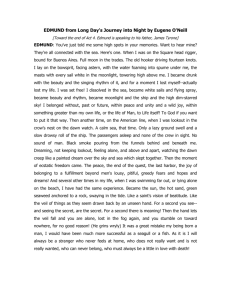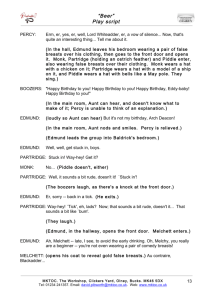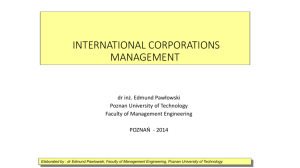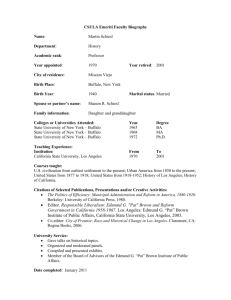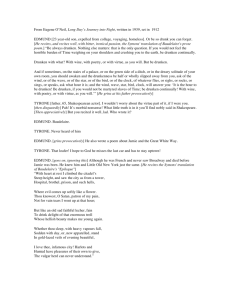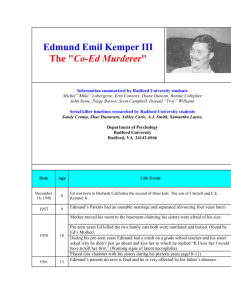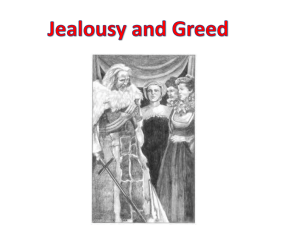St Edmund, King and Martyr
advertisement
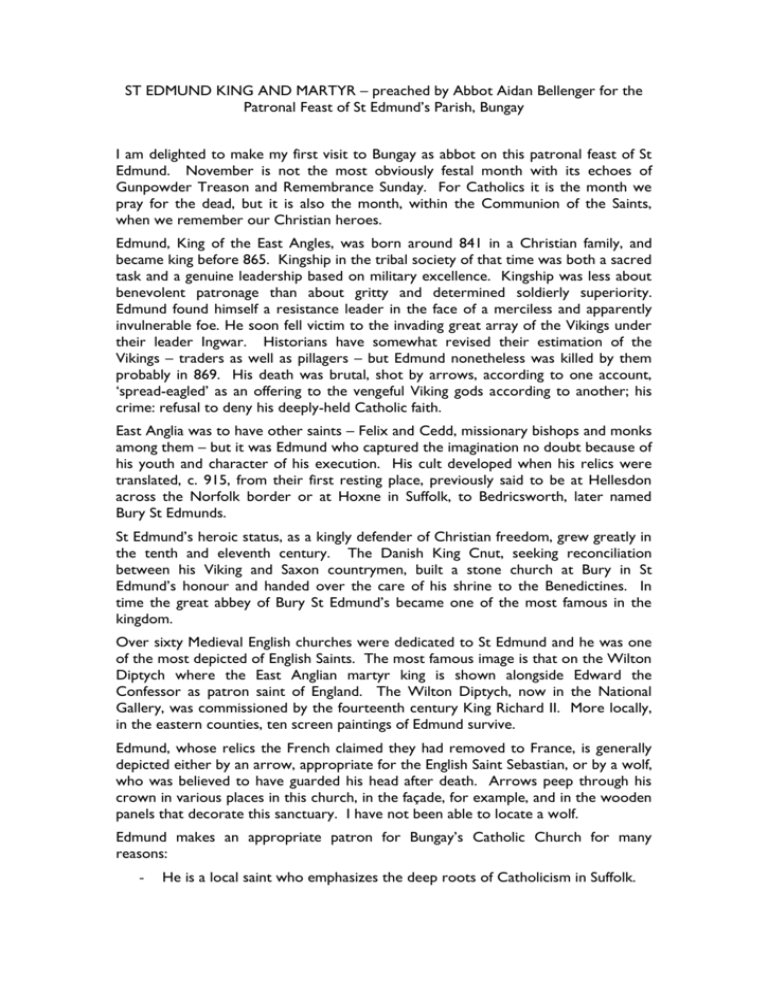
ST EDMUND KING AND MARTYR – preached by Abbot Aidan Bellenger for the Patronal Feast of St Edmund’s Parish, Bungay I am delighted to make my first visit to Bungay as abbot on this patronal feast of St Edmund. November is not the most obviously festal month with its echoes of Gunpowder Treason and Remembrance Sunday. For Catholics it is the month we pray for the dead, but it is also the month, within the Communion of the Saints, when we remember our Christian heroes. Edmund, King of the East Angles, was born around 841 in a Christian family, and became king before 865. Kingship in the tribal society of that time was both a sacred task and a genuine leadership based on military excellence. Kingship was less about benevolent patronage than about gritty and determined soldierly superiority. Edmund found himself a resistance leader in the face of a merciless and apparently invulnerable foe. He soon fell victim to the invading great array of the Vikings under their leader Ingwar. Historians have somewhat revised their estimation of the Vikings – traders as well as pillagers – but Edmund nonetheless was killed by them probably in 869. His death was brutal, shot by arrows, according to one account, ‘spread-eagled’ as an offering to the vengeful Viking gods according to another; his crime: refusal to deny his deeply-held Catholic faith. East Anglia was to have other saints – Felix and Cedd, missionary bishops and monks among them – but it was Edmund who captured the imagination no doubt because of his youth and character of his execution. His cult developed when his relics were translated, c. 915, from their first resting place, previously said to be at Hellesdon across the Norfolk border or at Hoxne in Suffolk, to Bedricsworth, later named Bury St Edmunds. St Edmund’s heroic status, as a kingly defender of Christian freedom, grew greatly in the tenth and eleventh century. The Danish King Cnut, seeking reconciliation between his Viking and Saxon countrymen, built a stone church at Bury in St Edmund’s honour and handed over the care of his shrine to the Benedictines. In time the great abbey of Bury St Edmund’s became one of the most famous in the kingdom. Over sixty Medieval English churches were dedicated to St Edmund and he was one of the most depicted of English Saints. The most famous image is that on the Wilton Diptych where the East Anglian martyr king is shown alongside Edward the Confessor as patron saint of England. The Wilton Diptych, now in the National Gallery, was commissioned by the fourteenth century King Richard II. More locally, in the eastern counties, ten screen paintings of Edmund survive. Edmund, whose relics the French claimed they had removed to France, is generally depicted either by an arrow, appropriate for the English Saint Sebastian, or by a wolf, who was believed to have guarded his head after death. Arrows peep through his crown in various places in this church, in the façade, for example, and in the wooden panels that decorate this sanctuary. I have not been able to locate a wolf. Edmund makes an appropriate patron for Bungay’s Catholic Church for many reasons: - He is a local saint who emphasizes the deep roots of Catholicism in Suffolk. - He is a national saint who reflects England’s Christian cultural identity. - He is a saint associated with the Benedictine tradition of this county, which the Bungay Catholics represent today and have done so for 350 years. - Perhaps, most importantly, he is a heroic witness to Christian values as important to our own times when the focus of secularism rather than the arrows of the Vikings threaten the abiding and God-centered values of Christianity. St Edmund’s, Bungay, 19 November 2006

